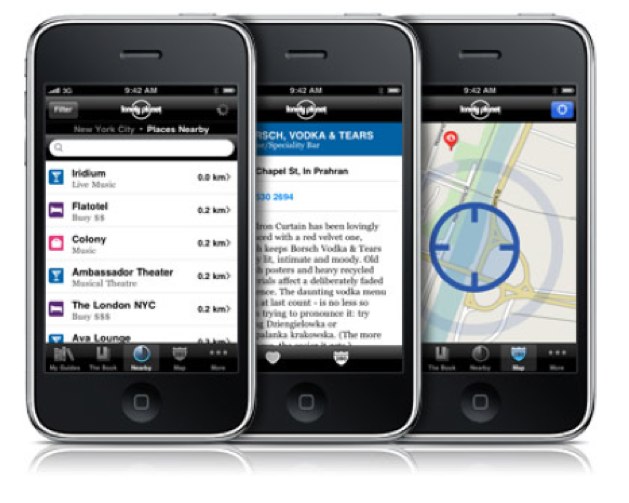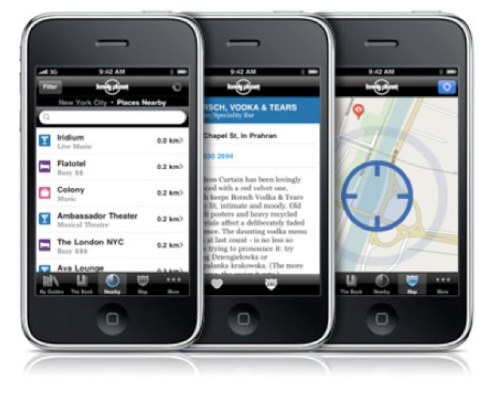Lonely Planet has revamped its price structure— the travel publisher has significantly dropped prices, by up to 50%, on all of its mobile apps. Its European city guides will now be available at $5.99, other city guides will be $7.99 (a few small cities like Macau and Manchester will be priced at $2.99). That’s a major discount when you consider that several of the city guides were originally priced at $15.99. Meanwhile, Lonely Planet’s just released iPad app, 1,000 Ultimate Experiences, is getting a third price cut at $7.99 (the app was originally released at $19.99, dropped to $9.99 two days after its debut).

Why the sudden generosity? Well, it could have something to do with the company’s recent foray into “free” and the story of that unpronounceable volcano. In the wake of Eyjafjallajokull’s eruption, Lonely Planet offered 13 European city guides for free for four days to help stranded travelers. The response was overwhelming: 4 million downloads in 4 days. Even more unexpected, revenues rose during the period, according to CEO Matt Goldberg who could not disclose specific numbers— he said many new consumers came for the free apps and ended up buying other apps.
Because of the positive reaction, on the expiration of the promotion Lonely Planet offered its entire European city catalogue of 32 cities for the discounted price of $4.99 for about one week.
The company is no stranger to “free,” it offers a couple of mobile apps at no charge— namely its San Francisco City Guide and the Mexican Spanish Phrasebook (offered as promotional bonus guides)— but the vast majority of its apps have carried premium price tags of $10 or more on average.
The basket of dramatic price cuts signals a shift in strategy for the travel publisher. The accidental experiment and the unexpected spike in revenues, revealed that cheaper prices could work for Lonely Planet without hurting profits, by lowering the bar to entry and encouraging new users to buy apps. That may hurt profit margins but it’s also offset by all the new customers and repeat purchases. Lonely Planet has tried to guard the value of its premium content by maintaining higher price points, but the latest move, seems to be acknowledgment that the gap between the company’s prices and its growing number of competitors on the iPhone was too wide.
The mobile travel app market is a competitive space, new rivals like NileGuide or Gliider are creating interesting and often cheap solutions to chip away at legacy travel brands. For example, NileGuide’s app (which is a geo-based service that aggregates data from 30 sources to tell you about your surroundings) requires a one-time install fee of $2.99. Meanwhile, Lonely Planet’s longstanding competitor, Frommers offers their city guide apps at $4.99. Lonely Planet’s apps obviously offer their own premium content, but $2.99 or $4.99 versus $15.99 is a huge differential. The city guide app was selling well, according to Goldberg—with roughly one out of five guides sold on the mobile platform— but I imagine Lonely Planet took a hard look at the numbers and decided to sacrifice the rich price per app for a bigger user base and a greater share of the travel app marketplace.
I chatted with the CEO on Friday— the interview was before the announcement —- but he did discuss the growing importance of mobile and said it was the largest contributor to revenues after the core publishing segment (print and e-books). The company which is 75% owned by the BBC, is still undergoing an interesting transformation, from travel book publisher to multimedia platform. Beyond mobile, the company has expanded television production, released an app on the iPad and yes, even launched a magazine in the past year. A magazine!
“Books Are A 500-year-plus Technology”
And that’s what’s amusing about this company and the CEO, a former SVP of Dow Jones. As Lonely Planet transitions into a more multidimensional and digital brand, it’s comfortable straddling areas that are typically defined as new media and areas of old media. The seemingly slow death march of print publications has given rise to a binary language to describe media, books are old, blogs are new, newspapers and magazines are old, mobile apps are new. And while that logically makes sense, we now also associate “old” with bad, archaic, regressive and “new” with exciting, progressive…correct. Lonely Planet is out to prove that all “new” is not correct and that perhaps the most progressive mind will borrow solutions or elements from old and new media and find ways to synthesize disparate parts.
Goldberg is confident that the print book will still be a major money maker in a few years, in fact he lauds it as a “500-year-plus technology” that still works really well: “We do believe in the future of the book.” You can call him naive, and chalk it up to the same naivete that introduced $15.99 city guide apps, but he’s got at least one good reason: the company’s “traditional” book segment continues to grow in revenues. Here is part one of our interview:
